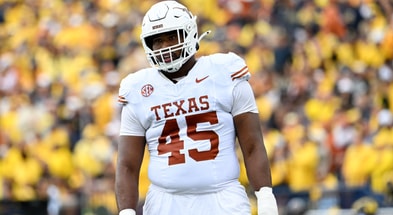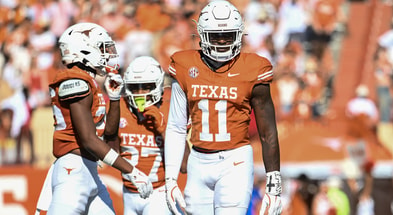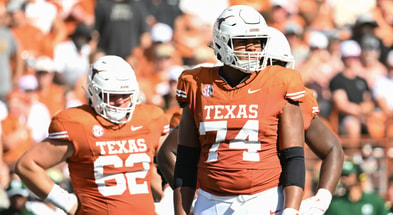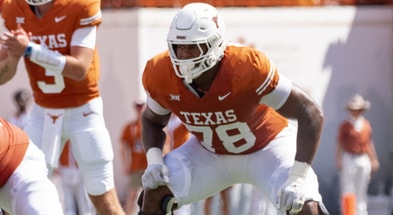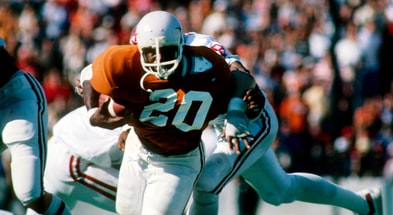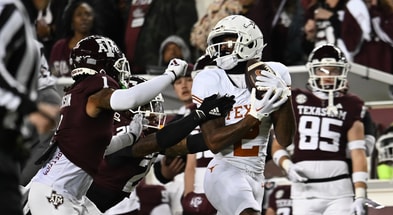Texas running to keep pace with plans for new indoor training complex

A return this past Saturday to the football cathedral named Darrell K Royal-Texas Memorial Stadium for the Longhorns’ Orange-White Spring Game and a journey up and down through the new South End Zone Complex on the way to postgame interviews showed just how much those facilities have improved in the past three years.
[Get FOUR MONTHS of Inside Texas Plus for only $1!]
And there’s more to come, as Texas athletic director Chris Del Conte recently unveiled the plans for a new indoor training complex for the football team. The facility will be located where the Steve Hicks School of Social Work sits at 20th Street and Robert Dedman Drive between the Recreational Sports Center and the Jamail Texas Swimming Center.
“Through an aggressive and fiscally responsible approach, Texas Athletics plans to continue transforming and reimaging the spaces that serve as training grounds and second homes for our student-athletes, coaches and staff into highly-functional, world-class facilities,” Del Conte said in a statement posted on the UT athletics website. “Ongoing facility investments will help us further align our physical resources with the world-class expectations that exists for one of the nation’s best departments.”
Texas was one of the first teams in the Big 12 to have an indoor facility when “The Bubble” was built at the north end of the Frank Denius Fields across the street from the LBJ School of Public Affairs.
But that was in 2002 and a lot has changed in the athletic landscape over the past two decades.
The construction of the new Indoor Practice Facility will allow the Longhorns to get closer to some of its future Southeastern Conference rivals, and we all know that any edge is a big difference when it comes to recruiting the best players to the 40 Acres.
In that vein, we decided to take a look at some of the best facility improvements in the Big 12, in Texas, and around the country over the past decade. That will give us some idea about where Texas stands in the facilities’ race.
Kyle Field, Texas A&M
Redeveloped at a cost of $485 million over a two-year period, Kyle Field features an expanded seating capacity of 102,733, making it one of the five largest stadiums in collegiate football.
The Aggies have welcomed more than 100,000 fans per contest to the stadium since the start of the 2014 season, including the stadium record of 110,633 for the Ole Miss game on Oct. 11, 2014.
Sports Performance Facility, Texas Tech
The Red Raiders unveiled their little-bit-of-everything facility in the summer of 2017 and it immediately went to the head of the class. The SPF includes the Petersen Family Indoor Football Practice Facility, an indoor track and field competition complex with seating for 1,500 fans, a strength and conditioning area, a nutrition center, and a sports medicine center which can be used by all Texas Tech athletes.
Top 10
- 1Breaking
Shedeur Sanders not drafted
Slide continues
- 2
10 Best Available Players
After Rounds 1-3 of NFL Draft
- 3
Picks by Conference
SEC, Big Ten continue to dominate Draft
- 4Hot
Jalen Milroe
Drafted before Shedeur Sanders
- 5Trending
Shedeur Sanders
Reportedly pranked by fake NFL team
Get the On3 Top 10 to your inbox every morning
By clicking "Subscribe to Newsletter", I agree to On3's Privacy Notice, Terms, and use of my personal information described therein.
Other indoor training centers
Both Texas A&M and Baylor have huge upgrades in process to their indoor practice facilities, with the Bears’ new football palace (the Fudge Football Development Center) set to come online in the summer of 2024.
Houston opened its indoor facility in December 2017. Set on the northwest corner of TDECU Stadium at the corner of Scott Street and Holman Street on the UH campus, the facility includes a full 120-yard football field with hanging goalposts as its central feature with a 30-yard side field to allow for additional work while the main field is in use.
TCU’s indoor facility, the Sam Baugh Indoor Practice Facility and Cox Field, opened in 2007, with renovations completed to the turf in 2012 and 2022.
As for other Big 12 schools, Oklahoma is in the planning stages of a new $175 million football facility with an indoor practice facility to replace the aging Everest Training Center, which was completed in 2002 at a cost-efficient $9 million. Kansas State is also building a new facility, a $32.5 million project adjacent to The Wildcat football offices and Bill Snyder Family Stadium.
As a comparison, two-time defending champion Georgia has the largest indoor facility in the nation. The William Porter Payne and Porter Otis Payne Indoor Athletic Facility is located on the campus’s Woodruff Practice Fields and is connected to the Bulldogs’ Butts-Mehre Heritage Hall, one of the nation’s top athletic facilities. The facility is programmed for maximum functionality, as it is approximately 140 yards long, 80 yards wide and 76 feet high.
And Alabama’s indoor practice facility, the Hank Crisp Indoor Facility, is considered one of the finest of its kind. The facility’s 130-plus-yard field made it the largest collegiate indoor practice facility in the nation under one roof when it was renovated in 2009. Hank Crisp Indoor has 97,000 square feet of clear space, measuring 20 percent larger than a typical college football field.


